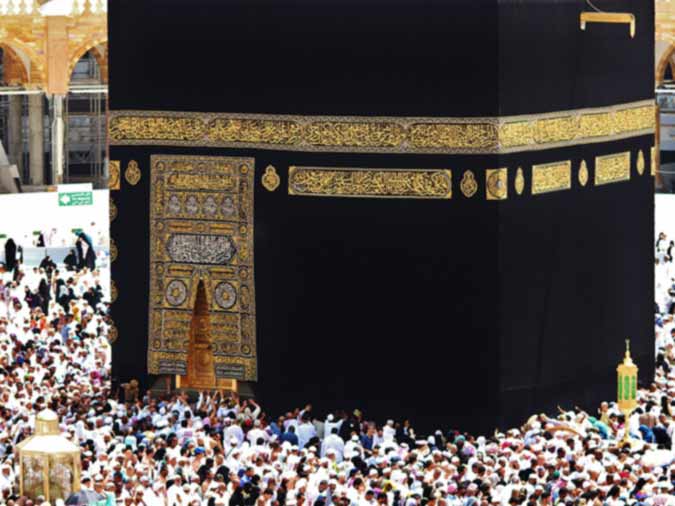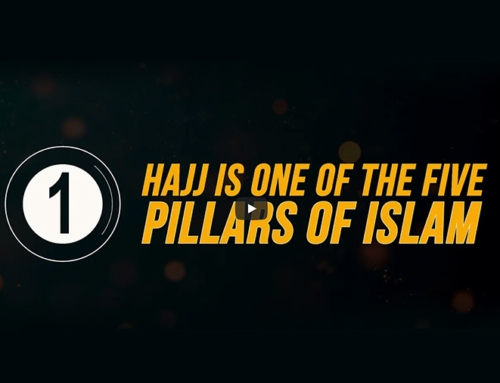By: Habeeba Husain
Understanding Arabic Terms In Islam And Hajj: A Comprehensive Guide
In day to day conversations, during lectures, and even in online posts, Muslims use many different terms from the Arabic language. These can be confusing for someone looking into Islam for the first time or even for a new Muslim, and understandably. This Hajj season, WhyIslam wants to help increase understanding regarding the numerous special and seasonal terms that will be used often in these blessed days.
Dhul-Hijjah
The twelfth and final month of the lunar calendar, which is the calendar Islam follows. The 8th through 13th of this month are when the Days of Hajj occur. Due to the shorter lunar calendar, the Islamic months move up each solar year by about ten days.
Hajj
The obligatory pilgrimage to Makkah adult Muslims who are able must make at least once in their lifetime. Those performing Hajj are sometimes called Hajjis.
Umrah
The “lesser pilgrimage” that can be performed at any time of the year. It has less requirements than the Hajj, and it is not mandatory. People will often also perform Umrah when they travel for Hajj.
Ihram
The state required to perform Hajj and Umrah. One enters it by performing a ritual bath, wearing the proper clothing (two unstitched white sheets for men, and regular loose clothing for women that cover all but the hands and face), praying two cycles, making an intention, and reciting the Talbiyah. Many acts are prohibited during this state, such as, using fragrance, hunting (even a bug), removing hair/nails, marital relations, arguing/fighting, and wearing stitched clothing/covering the head for men. The state is exited once the Hajj or Umrah is completed by cutting the hair.
Talbiyah
The phrase, “Labbayk Allahumma labbayk. Labbayka la shareeka laka labbayk. Inna al-hamda wa ni’mata laka wal mulk. La shareeka lak,” translates to, “I am at Your service. Oh Allah! I am at Your service. I am at Your service. You have no partner, I am at Your service. Surely, all praise and grace are for You, as is dominion over the entire universe. You have no partner.” This is recited to enter the state of Ihram and during multiple rites of the Hajj.
Kabah
The House of Allah, a black cube-like structure located in Makkah in Saudi Arabia. It is to this sacred site that Muslims make pilgrimage.
Masjid al-Haram
The mosque that houses the Kabah. In pictures, you will see the Kabah in the middle, surrounded by a grand structure—that is Masjid al-Haram, or literally, the Sacred Mosque.
Tawaf
The action of circumambulating the Kabah a total of seven times.
Maqam Ibrahim
A spot near the Kabah marked by a small glass structure containing the footprints of the Prophet Ibrahim. After the seven rounds of Tawaf are completed, one is to pray two cycles near this spot.
Zam Zam
Special holy water abundantly available in Makkah. It is the water that began flowing when the wife of Ibrahim, Hajar and their son Ismail, were left in the then barren land of Makkah. When God made the water of Zam Zam flow, it gushed forth so much that Hajar had to say, “Stop, stop!” or “Zam Zam!” This water is to be consumed after performing the prayer at Maqam Ibrahim, and throughout the visit to Makkah.
Sa’ee
The walking/running between the two mountains called Safa and Marwa seven times that takes place after performing Tawaf. This is the same act that Hajar performed centuries ago while desperately searching for something to soothe her crying baby, Ismail. Today, the mountains more closely resemble small encased hills.
Mina
The location where pilgrims of Hajj stay from the 8th of Dhul-Hijjah after the dawn prayer until after the dawn prayer on the 9th of Dhul-Hijjah (the four prayers remaining on the 8th and then the morning prayer on the 9th). Imagine hundreds and hundreds of white tents housing millions of pilgrims!
Arafah
After sunrise on the 9th of Dhul-Hijjah (also called the Day of Arafah or Yawm al-Arafah), pilgrims make their way to the plain of Arafah near where Mount Arafah is located. Mount Arafah is where the Prophet Muhammad (peace be upon him) delivered his famous final sermon to the Muslims. This is considered the most important day of Hajj, as it is the day dedicated to supplicating to God for forgiveness.
Prophet Muhammad (peace be upon him) said about this day, “There is no day when God sets free more servants from Hell than the Day of Arafah” (Sahih Muslim).
For those not on Hajj, it is highly recommended to fast this day, for the Prophet (peace be upon him said, “Fast the Day of Arafah, for indeed I anticipate that Allah will forgive (the sins) of the year after it, and the year before it” (Tirmidhi).
Muzdalifah
After sunset in Arafah (but before performing the sunset prayer) pilgrims head to Muzdalifah. At this location, one sees a sea of pilgrims under the stars. They perform Maghrib and Isha here combined and collect stones to throw at the Jamaraat before resting for the night and performing Fajr in the morning.
Jamaraat
There are three pillars representing the three times the devil tried to sway Prophet Ibrahim in his decision to obey God’s command. Each time, Ibrahim did not falter. Today, pilgrims approach these pillars known as Jamaraat, and pelt them with the stones collected as Muzdalifah.
Got Questions?
We have Answers. Get in touch now.








